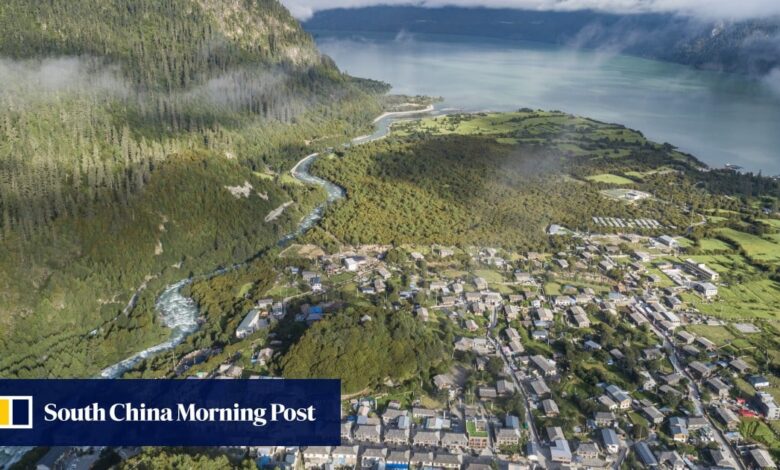Tibet can play ‘greater’ role in China’s carbon neutrality goals, regional chief says

[ad_1]
The 2.5 million square km (0.9 million square mile) plateau – with an average elevation of 4,500m (14,763 feet) – is the largest and highest in the world. It encompasses all of Tibet along with parts of bordering provinces, including much of Qinghai.
The plateau now accounts for 8 to 16 per cent of China’s total carbon sink, the experts said.
More than 120 government officials, as well as top academics and researchers participated in the two-day forum in the Tibetan city of Nyingchi, Xinhua reported.
Citing China’s second scientific research survey on the region that began in 2017, in combination with additional data, the experts said while Tibet’s annual carbon dioxide emission was 11.5 million tonnes, its annual ecosystem carbon sink had reached 47.6 million tonnes.
This indicated Tibet had reached a state of “carbon neutrality”.
Piao Shilong, a member of the elite Chinese Academy of Sciences, said that the region absorbs “far more than the anthropogenic emissions of the plateau”.
Over the last six decades, natural land and ocean carbon sinks have absorbed around 56 per cent of carbon emissions from human activity globally, according to a Intergovernmental Panel on Climate Change (IPCC) report in 2022.
However, the absorption capacity of natural sinks is decreasing as carbon emissions keep rising. Increasing emissions will “weaken nature’s capacity to take up carbon dioxide,” the IPCC has warned.
Tibet plugs into high-altitude wind power technology
Tibet plugs into high-altitude wind power technology
China is trying to increase its total carbon sink capacity by conserving and expanding forest, wetland and grassland areas, as outlined in a 2021 white paper on climate change issued by the State Council, the country’s cabinet.
The same year, Tibet launched a project to turn 137,800 hectares (340,511 acres) of land into forest by 2030. The project will help capture 229,100 tonnes of carbon dioxide from the atmosphere and release 193,000 tonnes of oxygen, Xinhua reported earlier this year.
However, the IPCC report also warned that the conversion of non-forest land for the sole purpose of increasing carbon sink capacity could have the opposite effect, and might end up creating a negative carbon sink and biodiversity loss.
At the forum, experts from CAS and the Chinese Academy of Engineering emphasised the importance of building a “national ecological civilisation highland” in Tibet.
This would include building up renewable energy capacity, promoting sustainable economic development, and improving the livelihoods of local residents.
In order to reduce the environmental impact of development in the region, there needed to be “a balance between high-quality development and high-level protection”, Xinhua reported Ministry of Natural Resources official Wang Lei as telling the forum.
[ad_2]
Source link






